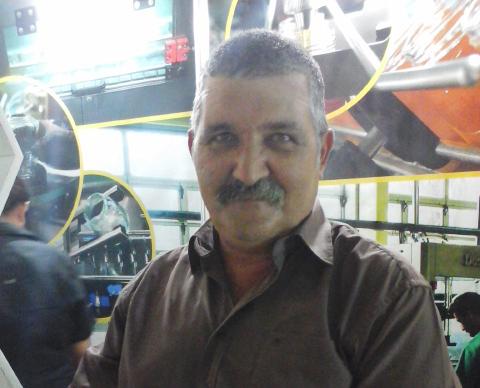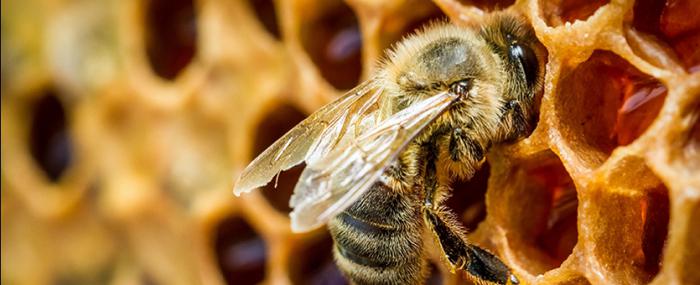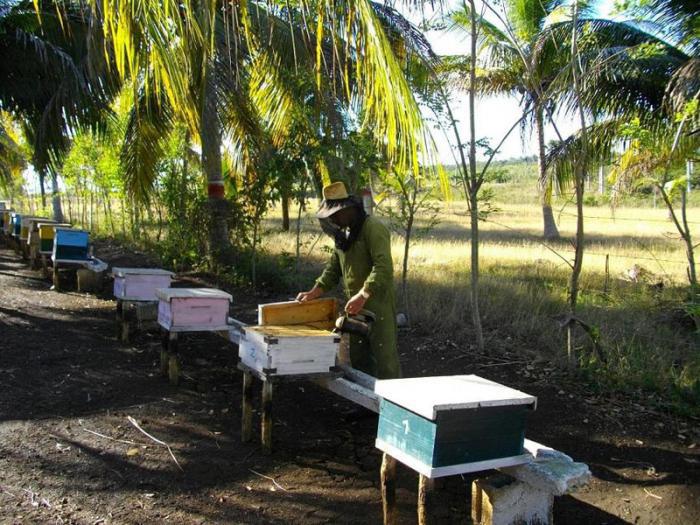Ever since I was little, my grandmother would say that taking a teaspoon of honey every morning was synonymous with a long life. She explained that it was the best thing to cure colds, stress or malnutrition. The list my grandmother outlined was virtually endless as, sure enough, sweet honey served as a remedy for almost any pain or deficiency affecting the human body.
I discovered then that a high content of minerals, vitamins and simple sugars and a wide range of phenolic compounds, peptides, organic acids and enzymes provide honey with unique antioxidant, energizing, immune-stimulating, healing, antiseptic, laxative, diuretic and antibacterial properties.
That’s why I thought of my grandmother when I met Oneido Gómez Farías, a 53 year old guajiro who lives in the area of Majagua in Ciego de Ávila and who, like my mother’s mother, idolizes bees and their honey.
But Oneido has even more to teach me about this field, as he was born and raised among beehives and, as just a kid, he was inextricably linked to beekeeping.
A faithful follower of a family tradition that emerged from the time of his Galician great-grandparents, this renowned honey producer has some 480 hives, a breeding area for queen bees and an apiary for the selection of the best male and female specimens for breeding.
“When I was a kid, I wanted to wear the veil – different from those used today – all the time, to go and see the combs my dad collected. That’s why I ended up reading countless books on the subject and although bees require complex care, with the support of modern technology, I achieved excellent results,” he explains.
In Oneido’s opinion, the human body could happily live off just honey, and not use any other type of sugar. “We can live off bees without resorting to other foods as honey is the most natural thing on Earth. In fact, derivatives such as propolis and pollen are used, which are an important source of medicine.”
With all his children also working in the family business, the expert assures that this is a work of love, and that there are few people in Cuba who have the triple status of beekeeper, breeder and selector.
Oneido tells Granma International that in 2012 he had yields of up to 48 kilograms of honey per hive and that this year this has risen to 113kg. He adds that the amount of honey produced has almost tripled in the past four years and that he believes it will be even greater in the future.
Accustomed to living with bees, as shown by the hundreds of stings on his hands, Oneido boasts the patience required to obtain natural honey, completely free of chemical substances. According to this specialist, best practice in hive management is key to achieving the maximum yield.
In terms of beekeeping for example, the queen bee must be changed from time to time. Some change the queen every two years, but Oneido does so every six months. As such, the life cycle of his queen bees is cut short, but this results in greater productivity. The objective is a longer annual flowering period, using docile, less aggressive specimens, more resistant to diseases that exist at the international level.
Meanwhile, the transhumance of bees, which is simply the moving of the hives from one site to another according to the flowering period, takes place over four months in Cuba from June. Once the October harvest begins, Oneido moves the hives to Cayo Coco to produce honey. Each year he travels 340 kilometers from his home to the coast and back.
“Just now I took 100 hives to this northern key and I got 19 tanks of honey, which is equivalent to 57 kilograms of honey per hive. This was one of the greatest successes of Ciego de Ávila and the country,” the beekeeper notes.
It’s worth noting that Cuban honey is sought after across the world as the hot and dry conditions produce a pure honey with a particular flavor, color and aroma acquired from flowers such as the romerillo, the whiteroot, hedge bindweed, dandelion and almond tree blossom. In addition, while in other parts of the world chemicals are used in the process, including in the smoker used to calm the bees, Oneido and his six workers use woods such as cedar and jiquí, which are non-toxic.
Part of the year sees the so-called dead months, which are the most difficult for beekeeping across the island, given the lack of flowers. As Oneido states, “I live off the bees for ten months of the years and they live off me for two. They give me eight months. August and September are when I must take care of the bees as that’s when they most need me.”
Maintaining the bees in optimal conditions over these two months is key to ensuring a strong and healthy bee population. Curiously enough, during this period the bees are fed with honey syrups and other sugars.
Thus Oneido breeds some two thousand queen bees each year and some 60 tons of honey are collected from his hives. “It seems unbelievable, but we have succeeded,” he excitedly states, while confessing that his favorite aspect of his work is the special care required by the queen bees.
“I believe that without them there would be no beekeeping in the world. The queen demands a huge amount of work and rearing her is not easy. I have been searching for docile and resistant bee species for two decades. If you don’t ensure good genetics in your bees, you won’t have honey,” he firmly explains.
Once he knows he has a good male or female specimen for breeding, Oneido moves it to the selection area and, while he proposes the best, it is the Beekeeping Research Center that certifies their quality. Today he has 400 production centers, with eight maternal and 16 paternal bees.
The experienced beekeeper is committed to delivering 25 to 30 tons of honey to the state and, if he reaches 60 tons, he sells all of it to the same enterprise. “I have no difficulty in collecting honey, wax, propolis. The enterprise pays us in line with market prices,” he explains.
Oneido aims to leave a legacy to his children and would also like them to study further. He has a profound appreciation of technological development: “Technology helps me with everything and I seek it increasingly as it improves the working tools I acquire through the state. The only thing I refuse to accept are chemicals.”
He adds that today there exist stainless steel masks, spatulas, etc and that a 2016 smoker is not like one of thirty years back. He notes, “Today, you don’t burn your hands and the veils are more protective.”
However, given that Cuban bees are not aggressive, neither Oneido nor his children work with veils. He recognizes that, “Many bees have stung me, but only due to the handling and I have never had allergies. I am immune.”
Oneido’s day usually begins at dawn and ends at sundown. As his hives are located on private property, he sets off with his lunch in hand, as he won’t be home until nightfall. Once out in the fields, he tends to his hives, cleans, organizes, does what needs doing. He doesn’t even rest on the weekends. Although he religiously takes ten days of holidays in August.
Out in the fields, jokes and rivalry abound, as each beekeeper attends to certain hives – identified with different numbers – and competes to see who produces more honey. Oneido was particularly fond of one bee, who they called “The lame one.” He proudly recalls that she “was a queen who had a missing leg and was in the breeding area for five years. She was an inspiration for me. She proved to be such a good mother, she produced thousands of daughters as excellent as she was.”
APICUBA
The Cuban Apiculture Enterprise (Apicuba) is currently promoting a new line of nutritional supplements: Apiasmín – combining bee honey, propolis and pollen; Propomiel - honey with propolis; Panmiel – combining honey and pollen; and Propoforte - obtained from a combination of honey, propolis, royal jelly and bee bread. These products are destined for the domestic retail market. Apicuba, which collects, refines and markets natural bee honey, faces the challenge of increasing its product range. Cuba produces some seven thousand tons of polyfloral, monofloral and organic honey of the highest quality each year. Since 97% of this honey is exported by the Cuba Export and Cítricos Caribe enterprises, honey constitutes one of the main sources of hard currency for the island. The remaining honey is packaged for domestic retail sale or used to manufacture medicines. Matanzas is one of the most important provinces in terms of honey production. The main international market for Cuban honey is Europe, where Apicuba has demanding and well-established clients, having earned great prestige. While almost all these clients prefer to buy in bulk, the enterprise is hoping to insert itself in these markets with finished products and as such is seeking to stabilize production levels. For example, both France and Canada are markets which prefer to receive packaged honey, which is exported in different formats ranging from 300 kilogram drums to 19 gram pots. The latter are widely used in Cuban tourist facilities and airports.


















